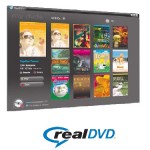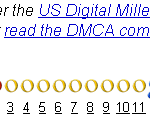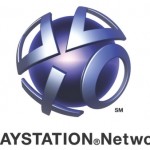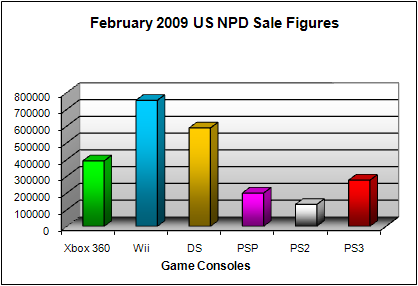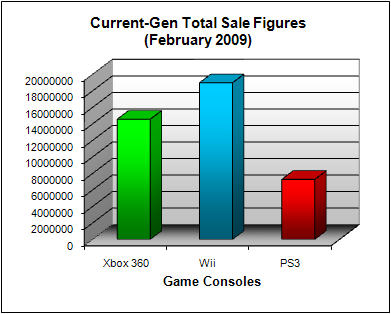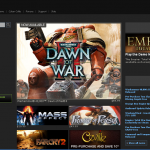Finally found a bit a free time to diagnose and fix my P4 system, which has graphics corruption problems. Changing the graphics card seemed to have solved it (was thinking it might have been a power supply problem, which it may still be). I also took the opportunity to upgrade the graphics card to a Blu-ray decoding capable one, just to see if the old dog can still learn a new trick or two. And it could! While if you do the maths, it’s probably not worth to spend too much money on an old P4, not when you can get a brand new system up for not much more, but there is an odd kind of attraction to see such an old system play Blu-ray movies perfectly.

Starting with Copyright news for the week, RealNetworks has stated that they never thought they would get sued for marketing a DVD copying software, not when it adds even more DRM I suppose.
What RealNetworks didn’t get is that it’s not about the copying at all. Controlling how the user interacts with the material, whether it leads to piracy or not, is the best way to protect your income stream. If there exist a system where the user has to pay for each use of the content, where they don’t own anything, but rather, only rents the content, then that would mean a steady and continuing income stream. The content owners will never get such a system, not when people are already used to “owning” content, but they can at least try to limit what you can do with the content. What RealDVD did was to allow the content to be used in a manner in which the content owners did not approve of – it will lead to no more piracy than the current DRM scheme (because DVD CSS doesn’t work) – and that’s their biggest “crime” here. The question is, once you’ve purchased the DVD, and you’re not allowing piracy to occur, do the content owners even have a say in what you can and cannot do from this point onwards? This again goes back to the point of fair use, of whether backups are allowed to be made, and all the same arguments have been going on since the turn of the century.
With three other major Bittorrent lawsuits going on, or about to start, at the moment, TorrentFreak catches up with the owner of TorrentSpy, one of the first torrent sites to go down in the courts, to see what’s happened in the year since. TorrentSpy are still appealing a massive $110m ruling against them, and it’s an interesting read on just how the legal system works and how perhaps all the cards are stacked in favour of content owners, because that’s where the money is. This is especially true in the US, where $47 million dollars were given to politicians by the entertainment lobby – you can just imagine the amount of influence this buys, from both side of politics. We can only hope that because the other torrent cases are outside of the US, that their legal systems will produce a fairer judgement.
It’s a bad news week for Internet users as several large US ISPs have agreed to work with the RIAA. There is still a lot of confusion as to what this actually means, but Comcast and a few others have denied that this means the introduction of the three-strikes system. What is clear is that they will be spying on their paying customers for the benefit of large corporations. There’s simply no other way to put what is happening, and I hope it frightens you as much as it does me. But monitoring can only go so far. The Pirate Bay is trialing a new secure system where it would be impossible to track usage. This is nothing new, because today’s torrent network is much harder to track down and stop than yesterday’s simple P2P services. If stopping piracy is the goal here, then the ever increasing monitoring and lawsuits will only lead to systems where it would then be impossible to track or stop. The ironic thing is that if the government was doing this spying, instead of anonymous multinational corporations, there would be a huge outcry. And there may still be, but so far, the ISPs have caved in rather quickly.
The developers of World of Goo, a popular puzzle game, has said that DRM is essentially a waste of time. If anti-piracy technology does not stop piracy at all, then this is the only conclusion one can come up with. Valve’s Steam game download service, always critical of DRM, will also come up with a new distribution system that will make DRM obsolete. It works by generating unique versions of the game for each users, so in essence, it is still a form of digital rights management. But it won’t have the usual trademark of DRM, which is the inconvenience it causes to legitimate users. You can’t blame publishers from wanting to stop people copying their games illegally, but you can blame them if they inconvenience legitimate users, and so if DRM exists where it’s transparent to users (and doesn’t impede on their privacy), then any argument you make against it would then be an argument for piracy, which is not what anti-DRM people are trying to do. In more bad news for DRM, the FTC has come out to warn content owners to restrain themselves when it comes to DRM usage, and not let it get out of control like the whole Sony rootkit incident, or the recent EA Spore disaster. It looks like EA is finally listening though, because Sim 3, their next big PC hit, will only come with standard disc/serial based DRM that has existed since the days of CD-ROMs. So overall, a good week for the anti-DRM movement, but unfortunately, content owners are already moving quickly to find another way to infringe on our rights with the Big Brother ISP monitoring programme being implemented.

Onto high-def news. Disney did something interesting during last week, where it released the Blu-ray version of Bolt two days earlier than the DVD version, in a move to help out the HD format.
Unfortunately, it seems to have backfired with many stores having to break the release date of the DVD version as confused customers turned up to buy the movie, only to be told that the Blu-ray version is the only version available. Blu-ray supporters will see this as a good move to promote Blu-ray, but anything that prevents people getting what they want when they want it will almost always backfire. This is something that might work when BD has 50% market share and it only needs a small push to get over the line, but when it has at best only 10% market share, you are effectively denying 90% of buyers from buying, all in the attempt to push a format that they are not ready to buy into. More evidence that is has backfired because Bolt barely made it into the weekly Blu-ray top 10, outsold 4-to-1 by Disney’s simultaneous Blu-ray/DVD release of Pinocchio. Of course as it was released rather late in the data period so it may do better next week, although it’s market share of 19% compared to the DVD version is a bit confusing, as the DVD version wasn’t supposed to have been released until the next reporting week.
Warner Bros. is opening a DVD-on-demand service, for rare films that are not worth publishing through normal channels, but still may have some demand. The “what you want, when you want it” principles behind this is very sound, and just imagine how easy and cheaper this system would be if instead of on demand DVD pressing, that digital distribution was used. Criterion already has such a digital system operating, called Criterion Online Cinematheque. An on-demand pressing service may very well be the only future optical discs have, if digital gets its way.
![]() And finally in gaming, Sony has finally cut price to something PS3 related. Unfortunately, it won’t affect consumers (directly), as it is only a price cut to the development kit. Still no sign of an official price drop for the PS3, despite every sign showing that it needs one badly.
And finally in gaming, Sony has finally cut price to something PS3 related. Unfortunately, it won’t affect consumers (directly), as it is only a price cut to the development kit. Still no sign of an official price drop for the PS3, despite every sign showing that it needs one badly.
And that’s all we have for this week. Thank-you for reading. Hope I didn’t waste too much of your time by ranting on about this and that, which is very easy to do when you’re sitting in front of a keyboard sometimes. See you next week.

